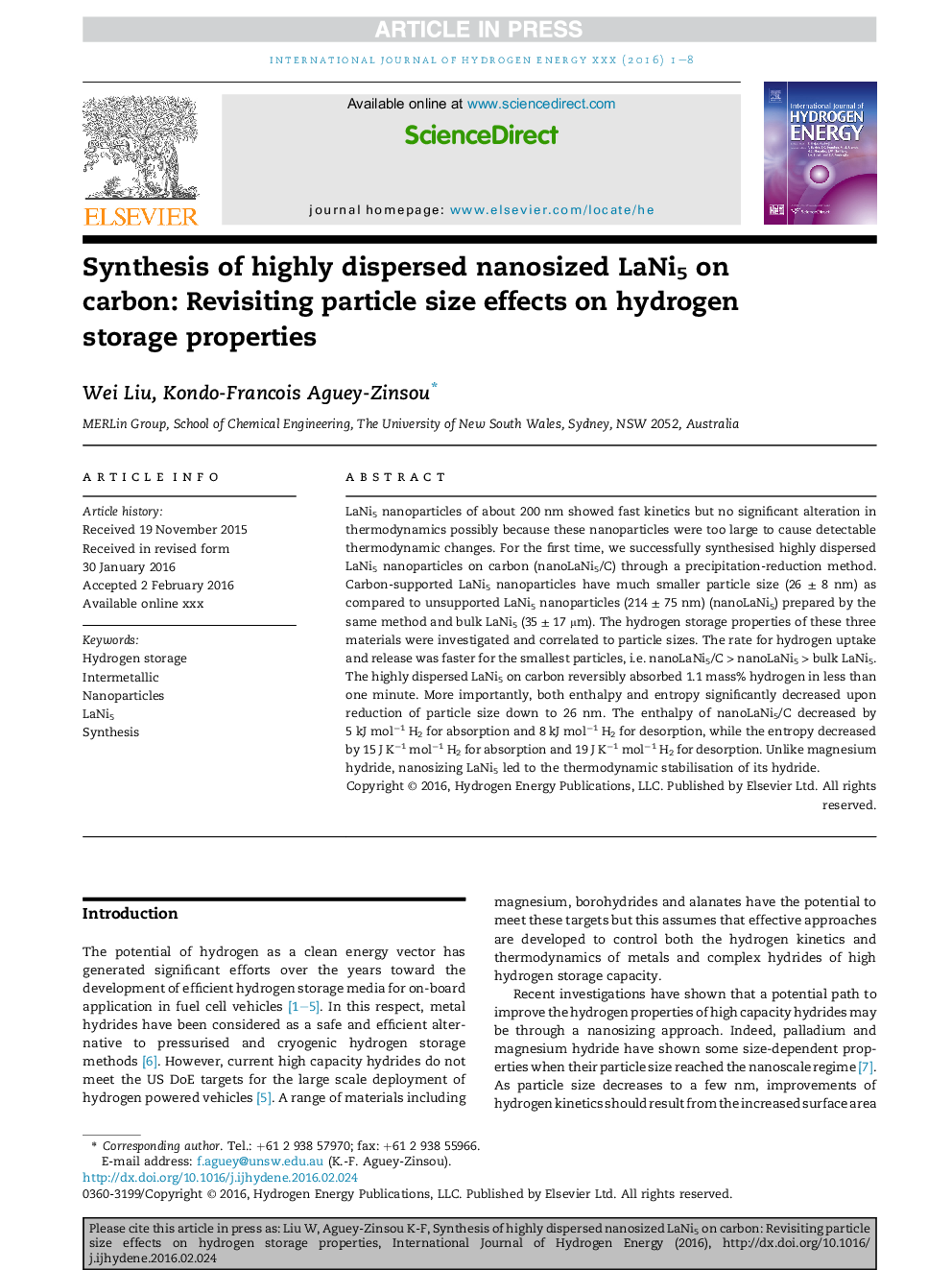| Article ID | Journal | Published Year | Pages | File Type |
|---|---|---|---|---|
| 7709917 | International Journal of Hydrogen Energy | 2016 | 8 Pages |
Abstract
LaNi5 nanoparticles of about 200 nm showed fast kinetics but no significant alteration in thermodynamics possibly because these nanoparticles were too large to cause detectable thermodynamic changes. For the first time, we successfully synthesised highly dispersed LaNi5 nanoparticles on carbon (nanoLaNi5/C) through a precipitation-reduction method. Carbon-supported LaNi5 nanoparticles have much smaller particle size (26 ± 8 nm) as compared to unsupported LaNi5 nanoparticles (214 ± 75 nm) (nanoLaNi5) prepared by the same method and bulk LaNi5 (35 ± 17 μm). The hydrogen storage properties of these three materials were investigated and correlated to particle sizes. The rate for hydrogen uptake and release was faster for the smallest particles, i.e. nanoLaNi5/C > nanoLaNi5 > bulk LaNi5. The highly dispersed LaNi5 on carbon reversibly absorbed 1.1 mass% hydrogen in less than one minute. More importantly, both enthalpy and entropy significantly decreased upon reduction of particle size down to 26 nm. The enthalpy of nanoLaNi5/C decreased by 5 kJ molâ1 H2 for absorption and 8 kJ molâ1 H2 for desorption, while the entropy decreased by 15 J Kâ1 molâ1 H2 for absorption and 19 J Kâ1 molâ1 H2 for desorption. Unlike magnesium hydride, nanosizing LaNi5 led to the thermodynamic stabilisation of its hydride.
Related Topics
Physical Sciences and Engineering
Chemistry
Electrochemistry
Authors
Wei Liu, Kondo-Francois Aguey-Zinsou,
